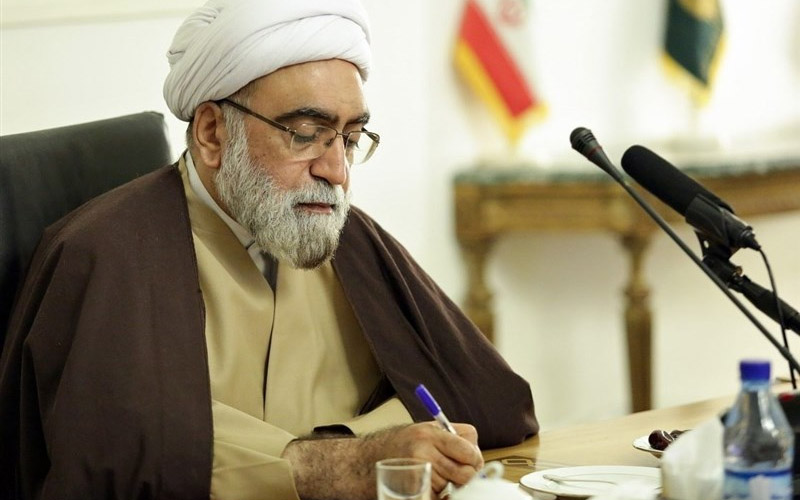Iran’s budget deficit has led to massive government borrowing, a significant increase in liquidity, increasing inflation, and the national currency devaluation. However, the ruling regime does not collect taxes from the economic giants under the supervision of Supreme Leader Ali Khamenei to compensate for the deficit.
In January 2020, Omid Ali Parsa, then-head of the Tax Affairs Organization, said that “half of the country’s economy is exempt from taxes.”
Such a large portion of the country’s economy are exempt from taxes while the government’s tax revenues from the people, businesses, government employees, merchants, and private sectors have increased tremendously over the past years. The share of taxes in the government’s budget increased from 45 percent in 2021 to 52 percent in 2022, and Davoud Manzoor, head of the Tax Affairs Organization, said on March 6, 2023, that this figure would increase to 57 percent in 2023.
The Astan-e Qods-e Razavi (AQR) is one of Iran’s economic giants that is exempt from taxes. It’s head is appointed by Khamenei himself. AQR includes collections, such as the Imam Reza shrine in the city of Mashhad, various institutions, cultural, industrial, agricultural and medical departments, and a car manufacturing branch.
From the beginning of the 1979 Revolution, AQR was entrusted to Abbas Vaez Tabasi by regime founder and first supreme leader Ruhollah Khomeini. Following Tabasi’s death, AQR’s helm was transferred to Ebrahim Raisi on March 7, 2016.
In 2019, as Raisi was appointed as the head of the judiciary and began his journey to become the regime’s president. Therefore, Ahmad Marvi, referred to as Ali Khamenei’s “old friend” and “one of the most loyal current managers” to him, was appointed as head of AQR..
AQR was sanctioned by the U.S. Treasury Department on January 13, 2021. At the same time, the then-U.S. Treasury Secretary announced that AQR, along with other foundations controlled by the supreme leader, dominate half of Iran’s economy and have caused widespread financial corruption in Iran.
In September 2019, Behzad Nabavi, a member of the regime’s so-called reformist circle, said, “In our country, there are four institutions that control 60 percent of the national wealth; the Execution of Imam Khomeini’s Order, the Khatam-al Anbiya Construction Headquarters, AQR, and the Mostazafan Foundation. None of these have any connection to the government or parliament.”
To this day no documents have been published indicating AQR pays taxes. Due to the lack of transparency and involvement in governance, it is not possible to provide accurate statistics of AQR assets, but according to available documents, they are estimated in the billions of dollars.

More than 13,000 hectares of the 30,000-hectare area of Mashhad city are among AQR endowments. These are not limited to the city of Mashhad and are scattered in most provinces across Iran, as well as Afghanistan and Azerbaijan. In Mashhad alone, AQR has more than 300,000 tenants.
However, what makes AQR special in terms of taxation and economics is the large number of companies in various fields that are under its control. AQR is active in industries such as pharmaceutics, financing, agriculture, construction, automobiles, mining, energy, management, textile, livestock, and food industries. All these companies are managed and supervised by the Razavi Economic Organization.
This organization, self-described as “the largest economic holding in the eastern half of the country,” controls more than 70 companies and institutions.
No government institution is able to audit AQR due to its political power. It is accountable to Khamenei alone.
The Razavi Economic Organization supplies more than 145 types of different industrial, mineral, agricultural, and livestock products and services to the market.
For example, the “Anabad Agriculture and Industry Company” alone owns 10,000 hectares of cultivated land.
A large swath of 69,880 hectares in forestland located in northern Iran is under the control of the “AQR Forestry and Construction Company.”
AQR’s pistachio production inside Iran reaches more than 6,000 tons per year, of which 2,000 tons of dry pistachios are exported.
Every year, AQR’s endowment lands provide 500,000 tons of agricultural products.
More than 30 percent of the sugar cube production in Khorasan Province and ten percent of the country’s total sugar cube production are under AQR’s control.
AQR has control over many registered mines, including 11 percent of the country’s mines that provide granite stones for construction purposes. Moreover, 17.3 percent of the country’s auto industry, city and intercity buses are owned by AQR. And in some food industries, such as yeast and related products, up to ten percent of the country’s total production belongs to AQR.
The AQR Carpet Manufacturing Company has 700 employees in its carpet weaving factory in the cities Mashhad and Kashmar, producing4,000 square meters of [handwoven] carpets used in the Imam Reza shrine. The older carpets are sold for massive profits.
While the list of AQR’s economic assets goes beyond the extent of this piece, it is worth noting that of all these companies and assets are under the supervision of the supreme leader himself. This includes publicly listed companies that do not publish a detailed report of their performance.
IRNA, the regime’s official news agency, reported in 2019 that foundations and institutions under the supreme leader’s supervision, despite having a ten percent share in Iran’s economy, provide for only 0.008 percent of the country’s annual taxes.
Source: iranfocus


